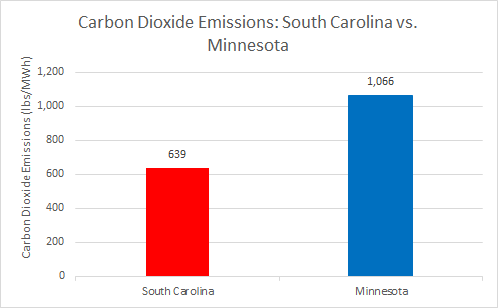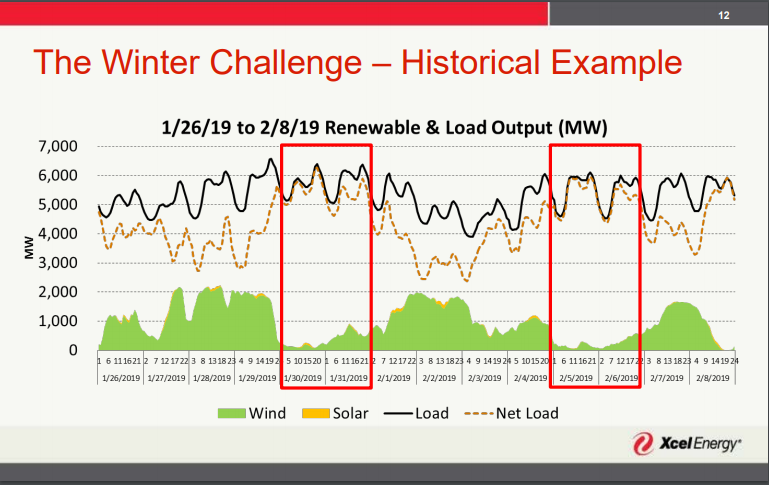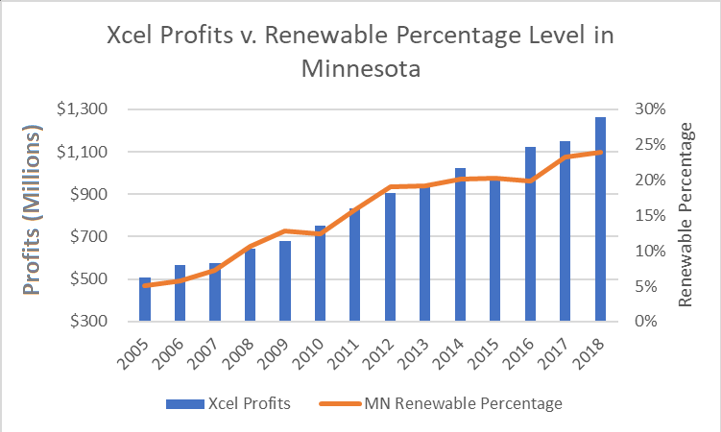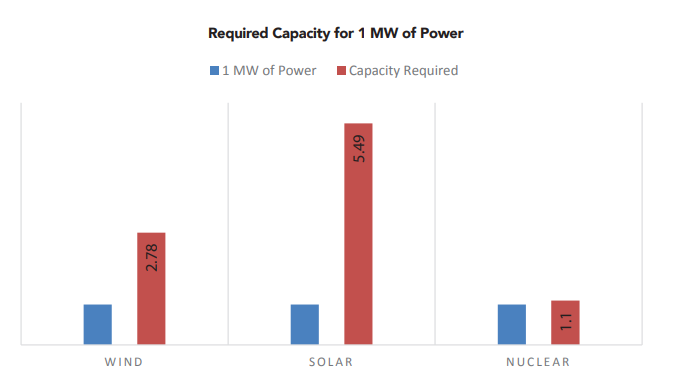South Carolina Has Much Lower CO2 Emissions and Lower Electricity Prices Than Minnesota
Liberal politicians in Minnesota love to pretend that they are leaders in reducing carbon dioxide emissions from power plants, which they claim are fueling an existential climate crisis. The data, however, shows that conservative South Carolina has much lower carbon dioxide emissions per unit of electricity produced and lower electricity prices than Minnesota. The reason? South Carolina embraces nuclear power, whereas Minnesota liberals eschew it.
According to the data, emissions of CO2 are 40 percent lower in South Carolina, per unit of electricity generated, than they are in Minnesota, according to the graph below which was constructed using 2018 data from the U.S. Energy Information Administration. This is due to the fact that South Carolina derives more than 50 percent of its electricity from nuclear power.

Unlike wind and solar, nuclear power plants can generate electricity around the clock, regardless of weather conditions. Now is a good time to recall that wind and solar were virtually useless during the polar vortex a year ago because it was too cold for the wind turbines to operate, and there was too much snow on Xcel Energy’s solar panels for them to produce electricity, as you can see in the graphic below.

The fact that we can’t rely upon wind and solar to deliver electricity when we need it most means no matter how many wind turbines or solar panels we build in the state, we will still fundamentally rely upon natural gas, coal, and nuclear power to make sure our lights, furnaces, and emergency services do not go out when the temperature is -29 degrees.
Using coal and natural gas when the wind isn’t blowing or sun isn’t shining will emit carbon dioxide, which means liberal lawmakers who are infatuated with wind and solar power are locking in higher carbon dioxide emissions for the foreseeable future, compared to a grid powered by nuclear power, instead.
Not only does South Carolina have lower carbon dioxide emissions, they also have lower electricity prices. EIA data show the total cost of electricity in South Carolina is about 7 percent lower than in Minnesota, and I will wager that this price discrepancy will only grow larger as policymakers in Minnesota push for 100 percent carbon free electricity mandates, and government-approved monopoly utility companies like Xcel Energy seek to pad their guaranteed profits by building more wind and solar facilities.

I am confident in this wager because wind and solar are not very productive in Minnesota. In fact, the latest EIA data show wind turbines were less productive in 2018 than they were in 2017, producing only 33 percent of their potential, and solar panels only produced 18.6 percent of their potential. In contrast, Minnesota’s nuclear power plants produced 95.6 percent of their potential, which means you would need to install nearly three times as much wind capacity, and five times as much solar capacity, to equal the output of nuclear power plants. This will lead to a massive and expensive overbuilding of the electric grid.

In the end, if liberal politicians actually think the world is going to end due to a human-caused climate crisis, they are going about reducing carbon dioxide emissions in the least effective, and most expensive way possible. Unfortunately, progressive politicians like Governor Walz and Minneapolis mayor Jacob Frey don’t seem to evaluate the impacts of their proposed policies on whether or not they are effective, but rather on how much money they spend while grandstanding about their “green” credentials.
As a result, conservative states will have a better business climate, enjoying the benefits of lower electricity prices, while also emitting fewer emissions than virtue signalling progressives in Minnesota who refuse to legalize new nuclear power plants.